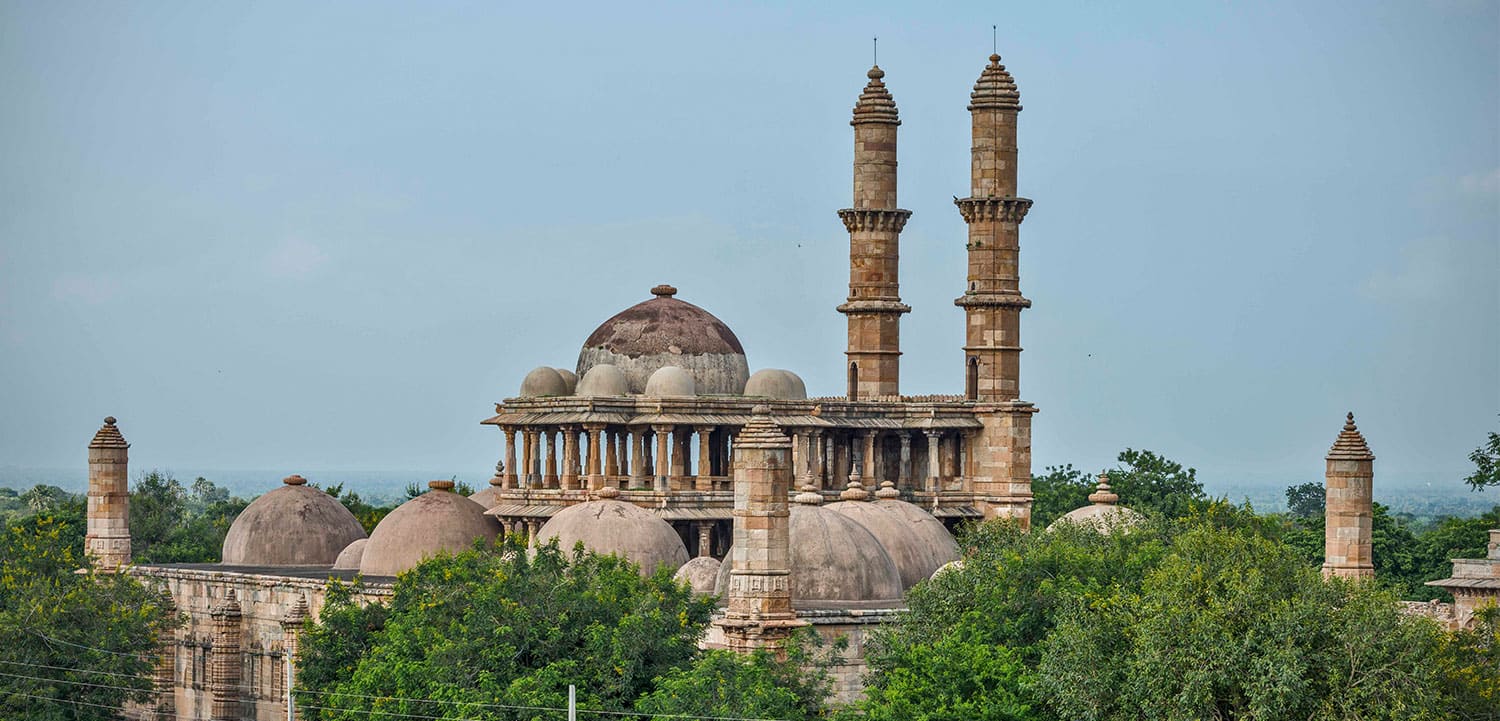Champaner-Pavagadh Archaeological Park
Tell us what you need and we will respond to your query as soon as possible!

The Capital of the Sultanate of Gujarat, Champaner could be a chronicled city found within the Panchmahal area in Gujarat. Being included within the tip top list of the UNESCO World Legacy Locales over the globe, this magnificent archeological stop set within the heart of the city of Champaner and in the midst of the Pavagadh slopes is one of the foremost looked for after places in Gujarat.
Champaner-Pavagadh Archeological Stop holds a parcel of chronicled as well as legendary centrality in itself. The Stop comprises of umpteen number of awe inspiring building ponders comprising of both Hindu & Islamic styles of plan. Another curiously piece of trivia with respect to this put is that the slope of Pavagadh is accepted to be a chunk of the Himalayas that was initially carried by Hanuman to Lanka within the Ramayana epic. With such wealthy history to its title, this makes up for an extremely charming put to visit.
The Champaner-Pavagadh Archeological Stop is found within the legacy town of Champaner in Gujarat. This UNESCO certified World Heritage Location may be a commemorable save of the human way of life crossing from the Chalcolithic or the pre-historic times to the 16th century.
The archeological stop houses a wide field of antiquated engineering communicated through royal residences, sanctuaries, portals and mosques. The Champaner-Pavagadh Archeological Stop moreover cites obsolete remainders over categories such as horticulture, water preservation and private wards of the time. There's too a exceptional mix of Hindu and Islamic engineering here.
Found by the well-known Chavda Ruler of the 8th century, Vanraj Chavda, Champaner is accepted to have been named after Champa, the king's companion and a common in his court. Be that as it may, a few convictions moreover state that the title is inferred from the yellow tinted rocks within the town's neighbor, Pavagadh.
Pavagadh was a imperative exchange course connecting Gujarat to both North and South India. Hence, the place pulled in very many rulers and rulers to this prospering portion of the state. In spite of the fact that Champaner was made the capital city of Pavagadh by Mahmud Begda amid the early Mughal run the show, it was assist taken down and prevailed by Humayun, a afterward ruler of the Mughal kingdom.
Post 1535, Champaner-Pavagadh as it were had negligible run the show amid the Maratha rule and was devoid of any modernisation until it was a British colony within the 1800s. It is said that the region's populace at that time was as it were 500. The town was a halt whereas numerous of its neighbors industrialized with different lines, and in this way is an extraordinary legacy location nowadays.
One will not discover a part of eateries close the Champaner-Pavagadh Archaelogical Stop, independent of the truth that Gujarat is very eminent for its astonishing cooking. There are some of restaurants around 30 kms absent from the most area. We have recorded them down. No specific food is taken after but in case you're at it, you shouldn't miss out on the Gujarati thalis. One can moreover discover other cuisines like Chinese, Italian, etc.
One can to begin with visit the mosques that this put observes- Lila Gumbaj Ki Masjid, Kevada mosque, Nagina Masjid & Cenotaph and basically the Jami Masjid. This might fair take almost a day long for you to involvement. The following day, you'll visit the Pavagadh fortification and the Lakulisa sanctuary nearby with it. Save the third day for the Kalika Mata Sanctuary and Fortification of Pavagadh and the destroyed Hindu and Jain Sanctuaries.